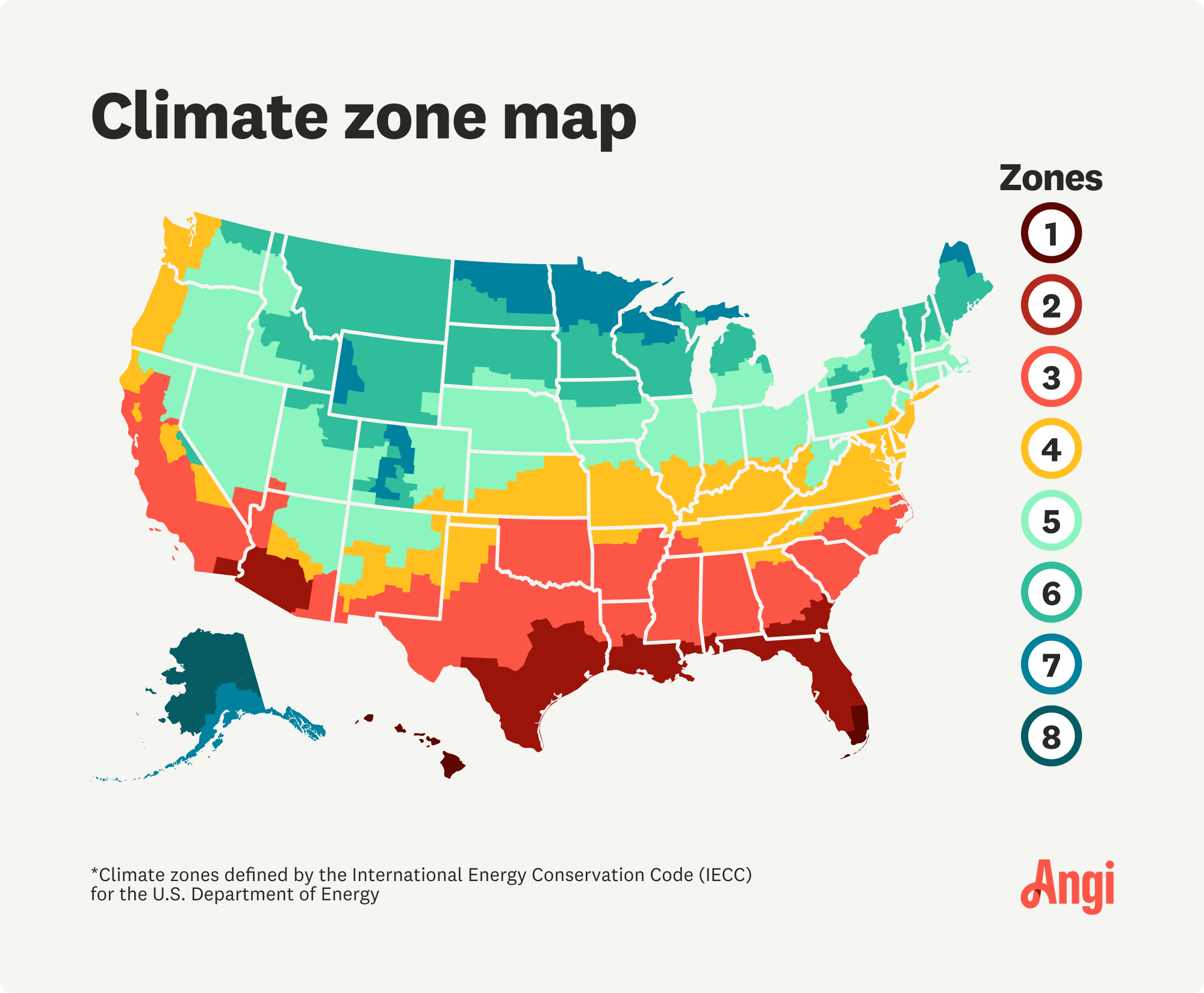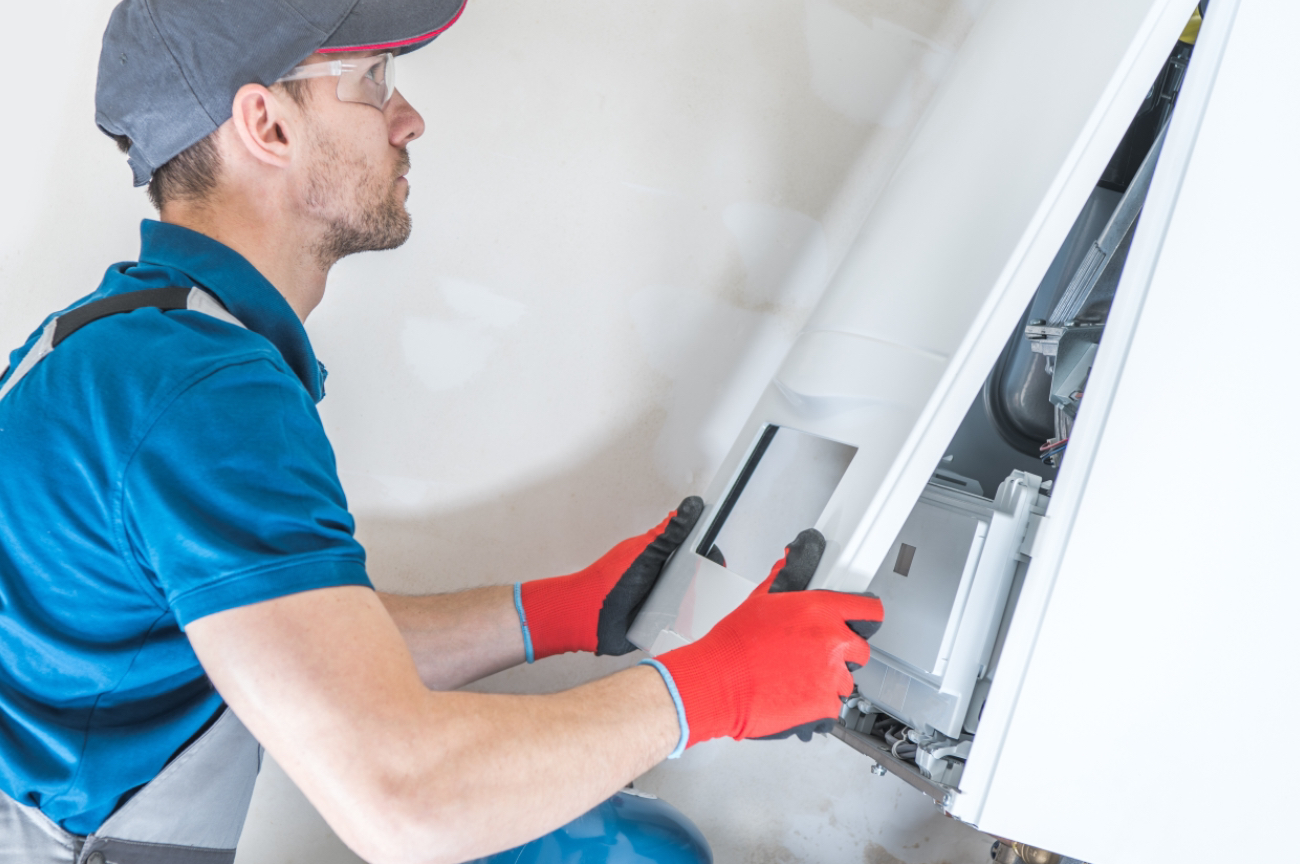
Average costs of HVAC inspections vary based on house size, location, and type of HVAC system. Follow our easy guide to gauge your home’s HVAC inspection cost.
Raise the roof for this ultra-cool central air alternative


Rooftop AC units work best when the HVAC system is located in the attic.
They're not a good fit for homes located in hot and sunny climates.
Before installing, consider accessibility for maintenance and repair.
If you’re tired of seeing a clunky air conditioning unit in your yard or listening to the constant whir of the machine while you’re entertaining on the patio, it might be time to consider a rooftop AC unit. These package systems differ from the typical central air conditioner system, but can spell major benefits in energy efficiency and cost. Though you’ll typically find an HVAC unit on the roof of a commercial property, there are still situations where it might be beneficial for residential homeowners. Let’s take a look.
Rooftop ACs are slightly different from central air conditioning. The standard central AC system (known as a split air conditioning system) contains two units: an outdoor condenser unit and an indoor air handler or furnace. In contrast, a rooftop AC (known as a package system) consists of a single unit that contains both the condenser and air handler. Though it still connects to your home’s ductwork, there’s no indoor component.
The cooling cycle works similarly to other types of air conditioners:
Warm air enters the unit and passes over the evaporator coils.
The evaporator coils use refrigerant to extract heat from the air.
The air cools down, and the refrigerant warms up.
A fan blows the newly cooled air into your home via your ductwork.
The newly warmed refrigerant circulates to the HVAC’s compressor, where the heat is released through the unit’s exhaust system.
Some rooftop AC units also have a heating component. This includes a gas-powered heat exchanger that helps warm up the air and circulate it through your home.
When taking on this project, expect questions only a pro can answer. With our network of local pros, you'll get the job done and your questions answered—without the hassle and stress of doing it yourself.
Deciding whether to install an AC unit on your roof is a significant choice that comes with its own set of advantages and drawbacks. From saving space to potential maintenance challenges, understanding the pros and cons can help you determine if a rooftop installation is the right fit for your home or business.
| Pros | Cons |
|---|---|
| Less noise | High installation cost |
| Saves space | Ductwork needed |
| Energy efficient | Issues may go unnoticed |
| Lower damage risk | Extreme weather can cause damage |
| More secure | Roof damage can negatively impact HVAC |
| Doesn’t hinder curb appeal | Can be difficult to access |
Before you make plans to install an AC unit on your roof, consider the following factors to determine whether it’s the right move for your home.
Typically, AC units are installed outside of the home, purposefully close to the interior HVAC system. This location ensures that the wires, hoses, and housing that connects the two major system components are as close together as possible to maximize efficiency.
So, if your interior HVAC system is located in your basement or on the first level of your home, your yard is likely the best place to install your condenser unit. However, if your interior HVAC unit is in your attic, your roof may be an ideal spot to keep the two pieces as close together as possible.
To work properly, condenser units require a flat surface that leaves plenty of room around the unit for airflow. For most homes, these conditions are only possible at ground level. But some yards offer little to no areas for a condenser unit.
In regions where homes are built on sloping mountains, on jagged cliff sides, or in significantly built-up areas where getting enough airflow around the unit would be an issue—like in major metropolitan cities or commercial areas—the roof may be the perfect choice, especially if the interior unit is already located in the attic.
Additionally, keeping your unit where you can easily access it means you’ll have an easier time spotting small issues before they become major ones, like noticing if vents have been blocked by leaves and debris, finding leaks, or picking up on subtle sounds that may indicate an issue. With a rooftop unit, you may find that these issues become out of sight and out of mind, which could become a problem if they’re only addressed during your system's seasonal or annual maintenance check.
Proper HVAC maintenance is essential for your safety. A lack of regular professional maintenance can lead to carbon monoxide leaks, refrigerant leaks, or electrical malfunctions, which all pose a serious threat to your health and home.
Homeowners should regularly be checking their outside units for signs of rust, chips, cracks, or build up. You’ll also need to consider how difficult it will be for technicians to get on the roof and perform those services. While maintenance and access may be a concern, a heating and cooling professional near you should be very familiar with servicing rooftop systems.

Not every home is located in an area that has the conditions needed to make rooftop AC installations work. In regions and climates that experience intense heat or storms, AC units that are located at a higher elevation will require more maintenance and protection to keep them in working order.
For example, if you live in Florida, where hurricanes and heat waves are common, your rooftop AC unit may need more TLC than it would if it were installed in a shady part of the yard. Of course, the pros may still outweigh the cons if your Florida side yard is an inhospitable location for your condenser.
You can expect to pay between $5,500 and $11,000 for a rooftop AC unit, whereas the typical central air conditioning costs between $3,800 to $7,500. These figures can vary widely based on a number of different factors, such as the hourly rate for installers in your area and the amount of time it takes to get the unit onto your roof. Plus, those estimates only take into consideration the cost of replacing the exterior condenser unit, not the interior HVAC system, which can add thousands of dollars onto your final price tag. Contact an air conditioning installer near you for a quote.
From average costs to expert advice, get all the answers you need to get your job done.

Average costs of HVAC inspections vary based on house size, location, and type of HVAC system. Follow our easy guide to gauge your home’s HVAC inspection cost.

Springing for HVAC maintenance costs may seem like an extra—and easy-to-ignore—item on your checklist, but it will save you money in the long run.

Whole-house fans can help reduce your electric bills by providing ventilation and cool, fresh air. Use this whole house fan cost guide to price out the project.

Discover heat exchanger replacement costs to learn about price factors, labor, and ways to save before hiring a pro or starting your project.

When you notice hot and cold zones in your home, it pays to learn how to balance airflow in your ducts to even out the temperature.

Keep your home perfectly cool during the warm months. Learn about nine types of air conditioners and how to choose the right one for your home.